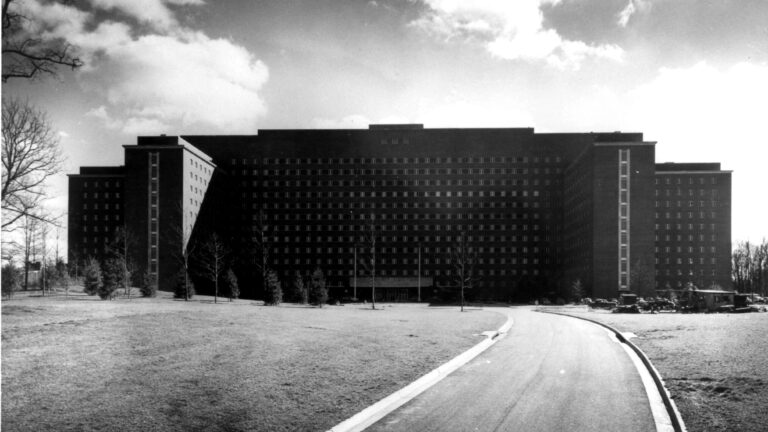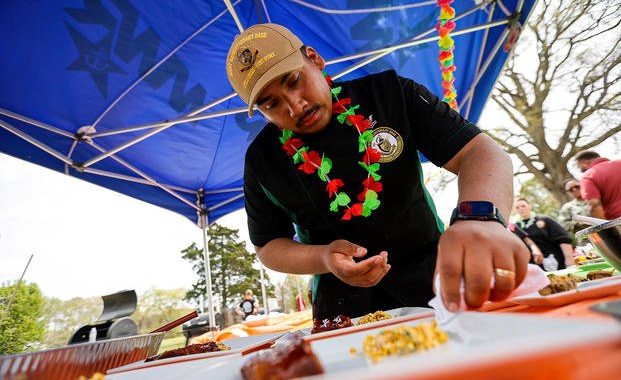During the Vietnam War, these Physician-Scientists were Called ‘Yellow Berets.’
6 min read
As we face off against Covid-19, we urgently need physician-scientists who can quickly translate observations made at patients’ bedsides into therapies. Sadly, they are in short supply.
Physicians who also have extensive training in scientific methods, often a Ph.D., are ideally suited to learn from the unusual clinical manifestations of Covid-19, such as strokes in young adults and autoimmune Kawasaki syndrome in children. Physician-scientists, however, are becoming extinct in the United States, comprising only about 1% of all physicians today, and with few young clinician researchers joining their ranks.
A solution to this crisis might be found in a quiet research program at the National Institutes of Health that flourished in the shadow of the Vietnam War. It may well have been the greatest medical research program in modern history. The two-year program, officially known as the NIH Associates Training Program, was started in 1953 as a way to bring newly minted physicians to the NIH campus in Bethesda, Md., so they could do research for two to three years under the guidance of senior NIH investigators.
Applications for the program surged during the Vietnam War. Why? It was one of the only ways for medical students to avoid being inducted into military service through the “doctor draft” and sent to Vietnam. Between 1955 and 1973, almost 3,000 medical school graduates enrolled in the program.
Nine physicians who trained at the NIH during this period went on to win Nobel Prizes. From the class of 1968 alone, Robert Lefkowitz discovered a family of cellular receptors that one-third of all approved drugs target; Michael Brown and Joseph Goldstein discovered a cholesterol receptor that led to the development of cholesterol-lowering statin medications; and Harold Varmus discovered some of the fundamental mechanisms of cancer.
The impact of the program extends far beyond Nobel laureates. A 1998 survey showed that its graduates comprised one-quarter of professors of medicine at Harvard, Johns Hopkins, and other leading medical schools. Dr. Eugene Braunwald, one of the most iconic cardiologists of the modern era (the hospital tower I work in at Brigham and Women’s Hospital is named after him), also started his career in this NIH program in 1955. And the self-proclaimed “dummy” of this class has become the most influential physician-scientist of our time: Dr. Anthony Fauci, who has headed the National Institute of Allergy and Infectious Diseases since 1984 and is a powerful voice in the U.S.’s response to the Covid-19 pandemic.
Although they were officially called clinical associates, many at NIH and beyond came to call them the yellow berets, a term that started out as an insult inspired by Bob Seger’s satirical song about “men who faint at the sight of blood,” who “watched their friends shipped away, the draft dodgers of the yellow beret.”
I interviewed a half-dozen of the associates. All of those I spoke with opposed the war. Some told me they alternated between performing experiments in their NIH labs and joining anti-war protests. Yet many, including Fauci, resent the implication of cowardice in the yellow beret moniker. As the achievements of the clinical associates have accumulated, that once snide term has become a badge of honor.
Few who applied for the program had any prior research experience. “I avoided all sorts of opportunities to do research,” Lefkowitz said as we sat in his office, surrounded by framed accolades and memorabilia. The transition from the wards to the lab was daunting. “I had never before in my life met with such sustained and unremitting failure,” he told me. Now he sees the lack of experience as advantageous, “Knowing too much hems you in.”
Within 18 months at the NIH, Lefkowitz had purified adrenocorticotropic hormone, a hormone made by the pituitary gland, the first step in his journey to the 2012 Nobel Prize in chemistry.
The insights that physician-scientists receive from patients is essential to their discoveries. The research by Brown and Goldstein that led to the discovery of statins, for example, was inspired by two siblings born with high cholesterol. “The little girl had her first heart attack when she was 3 years old. She couldn’t walk across the room without angina [chest pain],” Brown told me. “If we hadn’t seen those two children, our lives would have been very different.”
Such insights will be paramount to overcoming Covid-19.
The only blemish on the program was its lack of diversity. In one analysis of 1,577 associates between 1955 and 1973, only four (0.3%) were women, and almost none were people of color. A widely acknowledged yet unspoken fact was that women were not accepted into the program because they would take a research spot that might keep promising young male scientists “out of harm’s way” in Vietnam.
“Whenever you have an endeavor that is meeting the general needs of the public and society, you always do better when the people who are actually performing the activity are representative of the society that it’s trying to help,” Fauci told me. “Just the way diversity is important in society to keep it enriched, diversity is important in the subspecialties of the things that contribute to society, like biomedical research.”
As the yellow berets reach the twilight of their illustrious careers, the future of American medical science and the fate of the physician-scientist is more uncertain than ever before. One solution to resurrecting physician-scientists might resemble scientific conscription. While many medical schools incorporate a year of research in their curricula, I believe that this model should be expanded by requiring students to spend at least one structured year exploring an area outside of clinical medicine, such as basic science research, statistics, data science, or the humanities.
“If we could have some sort of obligation to the country in the field of medicine and science,” said Fauci, “I would not be surprised if we got the same sort of extraordinary results that we got back then.”
Academic medical centers are essential purveyors of life support for physician-scientists. In China, scientists earn more money than clinicians. In the United States, physician-scientists give up substantial, guaranteed income from clinical work in exchange for dwindling and uncertain sources of grant funding. Their employers need to put the academic back into academic medical centers by being “run like a real intellectual enterprise rather than a money making enterprise,” said Brown.
That starts by giving young physician-scientists the freedom to creatively solve the greatest problems facing humankind.
The NIH took excellent physicians and scientists in the country and let them develop in an environment not governed by trying to get the next big grant or to bill for as many clinic visits and procedures as possible. “We had the freedom to pursue our own ideas in a way that was independent, with mentoring and coaching, but it wasn’t like you were working for someone and doing someone else’s work,” said Fauci. “We were so young and we were thrust into the big leagues, as it were.”
Covid-19 has made the need for physician-scientists starkly clear. The NIH continues to support physician-scientists through programs such as the Stadtman Investigators program, which provides ample freedom and support for emerging physician-scientists and which champions diversity and inclusion as a core pillar. Yet unless funding for research increases and the NIH and academic medical centers develop novel initiatives — even including a scientific draft — the yellow berets might well be remembered as the last of the great physician-scientists.
“It was a grand circus of ideas,” said 84-year-old Jesse Roth, one of Lefkowitz’s mentors, “a Garden of Eden for young investigators.”
By





